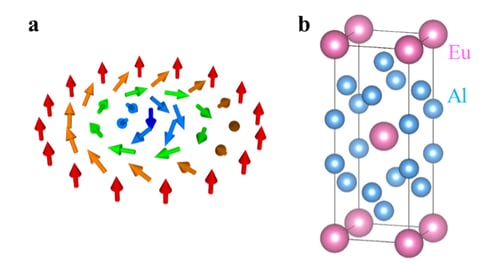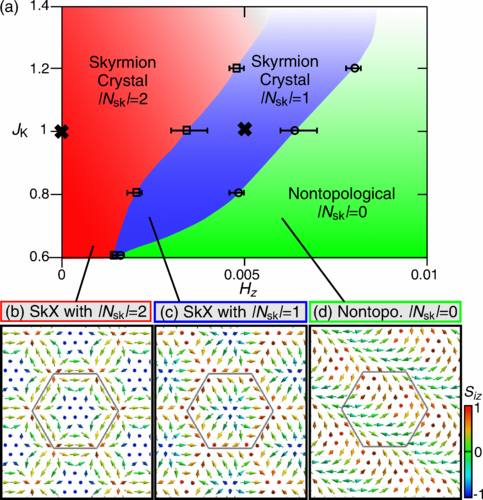Share this
Authors
Rina Takagi, Naofumi Matsuyama, Victor Ukleev, Le Yu, Jonathan S. White, Sonia Francoual, José R. L. Mardegan, Satoru Hayami, Hiraku Saito, Koji Kaneko, Kazuki Ohishi, Yoshichika Ōnuki, Taka-hisa Arima, Yoshinori Tokura, Taro Nakajima, Shinichiro Seki
Abstract
Magnetic skyrmions are topologically stable swirling spin textures with particle-like character, and have been intensively studied as a candidate of high-density information bit. While magnetic skyrmions were originally discovered in noncentrosymmetric systems with Dzyaloshinskii-Moriya interaction, recently a nanometric skyrmion lattice has also been reported for centrosymmetric rare-earth compounds, such as Gd2PdSi3 and GdRu2Si2. For the latter systems, a distinct skyrmion formation mechanism mediated by itinerant electrons has been proposed, and the search of a simpler model system allowing for a better understanding of their intricate magnetic phase diagram is highly demanded. Here, we report the discovery of square and rhombic lattices of nanometric skyrmions in a centrosymmetric binary compound EuAl4, by performing small-angle neutron and resonant elastic X-ray scattering experiments. Unlike previously reported centrosymmetric skyrmion-hosting materials, EuAl4 shows multiple-step reorientation of the fundamental magnetic modulation vector as a function of magnetic field, probably reflecting a delicate balance of associated itinerant-electron-mediated interactions. The present results demonstrate that a variety of distinctive skyrmion orders can be derived even in a simple centrosymmetric binary compound, which highlights rare-earth intermetallic systems as a promising platform to realize/control the competition of multiple topological magnetic phases in a single material.

Nature Communications: https://www.nature.com/articles/s41467-022-29131-9
These Related Stories
